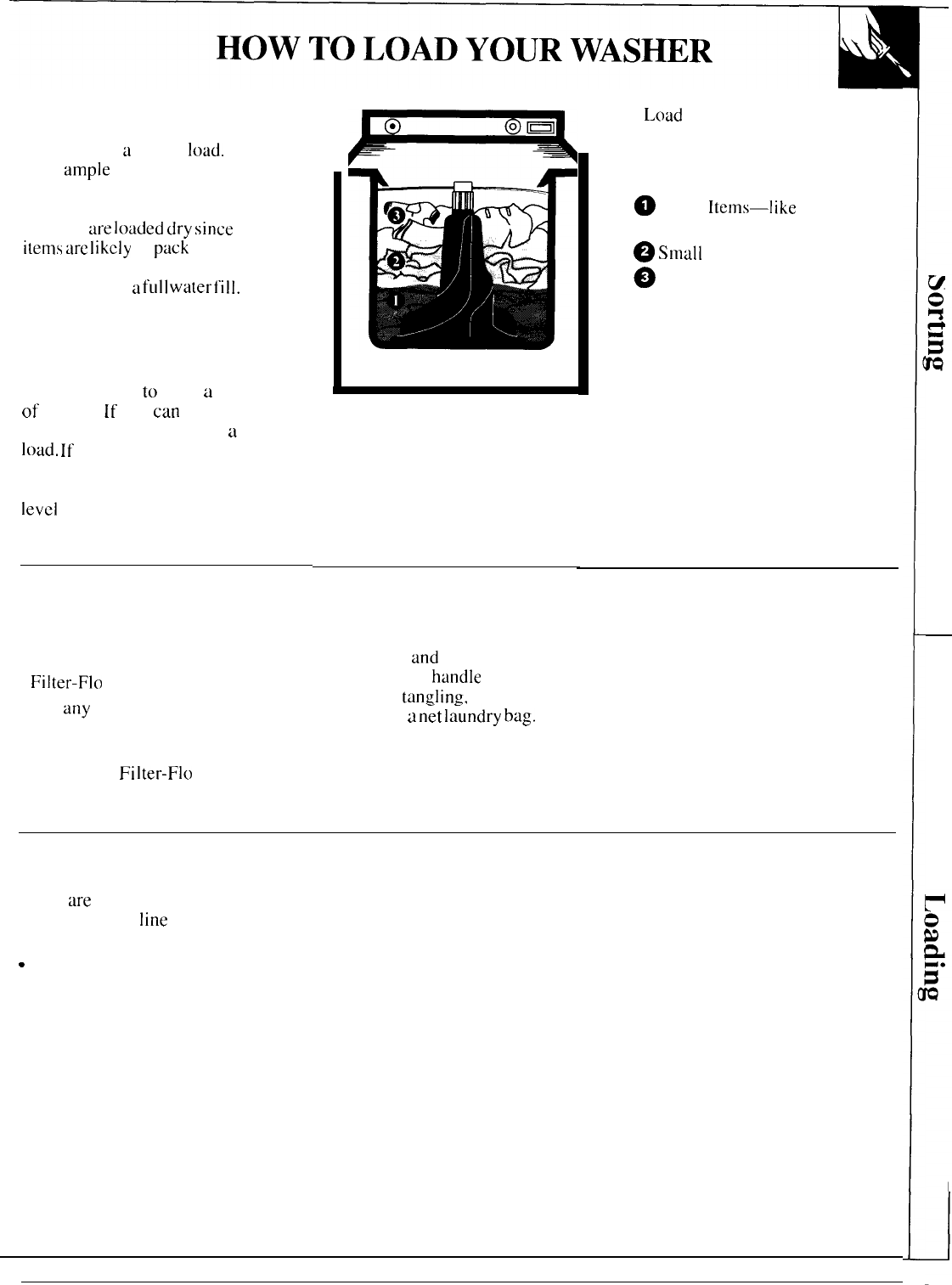
This illustration, with clothes just
reaching the Clothes Retaining
Ring, shows
a
proper
load.
Clothes
have
ample
room to move because
they are not packed down, nor
wrapped around the agitator,
Clothes
~re
loaded
dry
since
wet
itenls
tire
Iikcly
to
pack
down which
encourages overloading. This size
load requires
a
~LI]l
water
fill.
What is the best size load of
clothes—large, medium, or
small? Save time, energy and
detergent by avoiding extra use of
the washer. Try
to
wash
a
full load
of clothes.
[f
you
can
it is better to
save clothes until you have
a
full
load,
If you must wash smaller
loads, save water, energy and
detergent by adjusting the water
level
for the size of the load. See
Operating Instructions.
●
Load
clothes dry.
● Take a properly sorted group of
clothes and drop them loosely in
the wash basket in this order:
~
Large
Itelns—like
sheets. Do
not wrap around the agitator,
9
Small
[terns-like washcloths.
~
Medium Size Items–1ike
towels.
To Add Items After
● Turn off the washer.
● Carefully remove the
Filter-Flo pan.
● Add
any
additional articles
by submerging them next to
the use of
a
n~t
la~ndry
bag.
the
Washer Has Started
NOTE: When washing stockings,
panty hose
and
other easily tangled
items, always
htindle
separately. To
minimize
tan~ling.
we recommend
the agitator.
● Replace the
Fi
lter-Flo
pan
and restart the washer.
Special Recommendations for Washing Permanent Press If You Do Not Have a Dryer
If you
are
machine-washing Permanent Press clothes
● Use more water than you would for a regular load.
that you plan to
line
dry or drip-dry, use extra care to
Use a Medium Water Level for a Small Load; a
minimize wrinkling in the wash process:
Large Water Level for a Medium Load.
“
Be careful not to overload washer. Permanent Press
● Remove clothes promptly as soon as washer stops
clothes must have ample room to move freely. A
and hang immediately.
Medium size Permanent Press load is the largest that
should be washed.
13


















